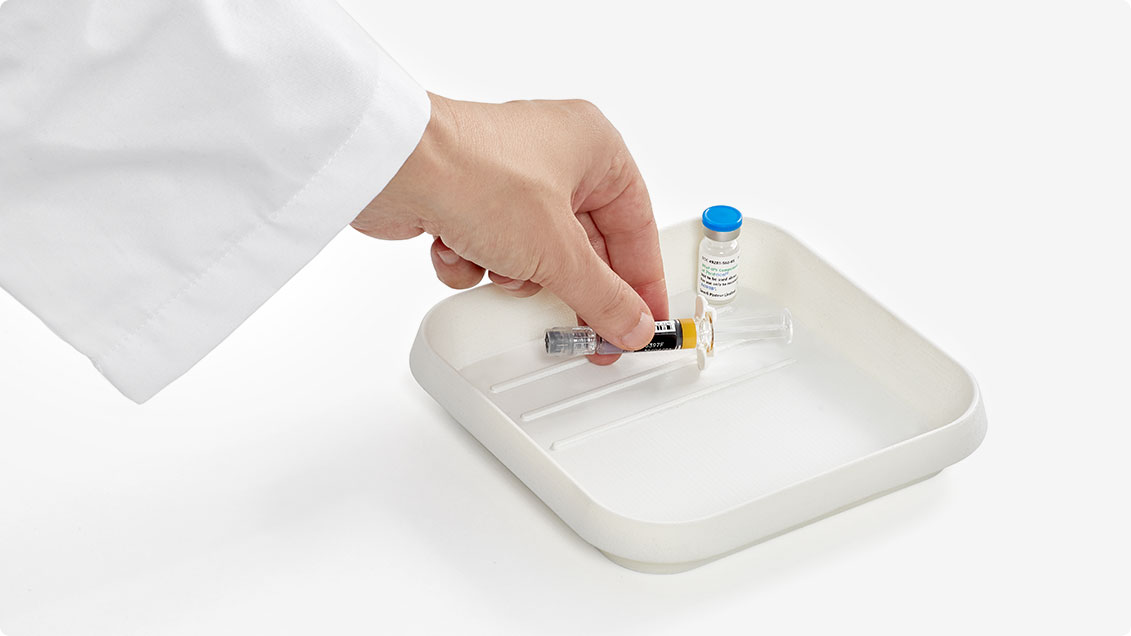Most medical practices look at their vaccine programs as a public service to their patients and their community—not as a cash cow. But many clinicians are in the dark about how to run a program as well as they run the rest of their practice.
Here’s why: vaccine programs are notoriously hard to manage well. The inventory is expensive and tracking and tracing is time-consuming, and the processes are complicated. But without impeccable management, every step of the process is an “opportunity” for leakage (a couple of doses lost here; a billing error there).
After studying thousands of practices across the country, we’re sharing four things you can do to make sure you are getting the most out of your program.
1. You need a dedicated vaccine coordinator.
With resources so thin in primary care, your staff probably wear many hats. But with vaccine inventory management, you need a single “champion.” The vaccine coordinator keeps the troops rallied behind the cause and makes sure every detail is taken care of to keep the program running efficiently and profitably: ordering, administration, billing, proper storage and maintenance for the vaccines, syringes, and other supplies. It’s a big job, and it’s crucial for your success—which is why the CDC recommends that practices hire a dedicated vaccine manager or coordinator.
ACTION: Hire or put someone in charge of your program. Whether it’s someone on your current staff or a new hire, a vaccine coordinator is crucial to take control of program processes, from ordering to inventory management, from administration to billing.
2. You need a standardized documentation process.
Our research shows that when documentation takes place more than 90 minutes after the appointment, 4X the number of doses go undocumented. This means nurses either need to painstakingly track the missing doses down, or risk losing the compensation from those missing doses. Both scenarios are costly—and frustrating.
ACTION: Make sure documentation is happening as close to the point of care as possible. To give your practice the data it needs to succeed, your vaccine coordinator should create a spreadsheet, post it by the vaccine refrigerator every day, and require your staff to manually input every transaction in and out of the fridge. For vaccines administered, you’ll need to capture on the ledger:
- the patient’s consent form (or ID number)
- the vaccine type that was checked out
- the lot # the vaccine came from
3. You need a plan—and accountability.
It’s said that you can’t manage what you don’t measure, and so auditing is a crucial step in the process, one that sets an expectation of accountability for your whole office. The “champion” will be in charge, but the auditing plan should be documented, communicated, and posted so the entire staff has visibility. This is especially important when it comes to staff turnover, often a challenge for primary care practices. With a set plan, it’s easy to retrain new staff and have everyone on the same page at all times. The plan should include detailed and up-to-date operating procedures, including how to handle routine vaccine management activities, as well as the protocol for retrieval and storage when there’s an emergency.
ACTION: Create and execute a weekly auditing plan. Every week, your team should count the products in your fridge and compare it to your shipments received and administered doses. If the numbers don’t match up, you’ll need to go into your EHR and compare the doses that were ordered by the physician to the doses that were checked out on the manual spreadsheet you created in the documentation phase
4. You need to regularly review and reconcile.
Most practices have only a rough idea of their purchase rate and their “ideal reimbursement scenario,” but no clarity on the actual net outcome of their program. In fact, we’ve seen many practices treat the vaccine fridge more like a candy bowl on your receptionist’s desk: people take what they want, when they want it; no one’s checking at the end of the day who took what; and when it’s empty, someone fills it up again. But vaccines aren’t Tootsie Rolls, and that candy bowl strategy can take a very real toll on your business.
ACTION: Create a monthly report that compares purchasing costs to reimbursements after adjudication. This report will show all the potential profit holes in your process: doses you’ve billed that the payer didn’t reimburse; doses you’ve administered but forgot to bill, etc.
Want an easier way to manage your vaccine program?
When managed properly, your vaccine program can be both a public service to your patients and you community, and a much-needed revenue stream for your practice. But as we’ve seen, it’s not easy to do on your own. That’s where a partner like VaxCare comes in.
VaxCare is a comprehensive buy-and-bill solution that simplifies, optimizes, and elevates your vaccine program: we take over your vaccine purchasing, providing unlimited inventory at no cost and automatically replenishing your stock when the supply gets low. We automate your workflow, eliminating manual tasks and costly errors. Our platform ensures you’re paid for every qualifying dose, along with the end-to-end visibility you need to keep your vaccine program profitable. All that’s left for you to do is take care of your patients.
